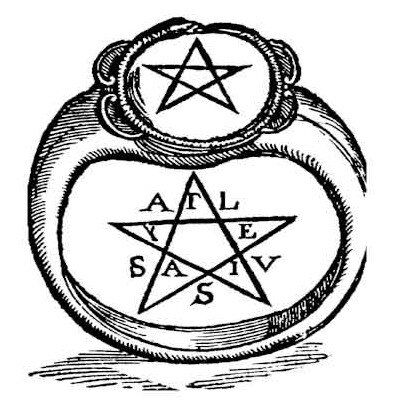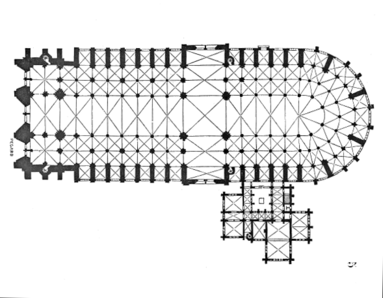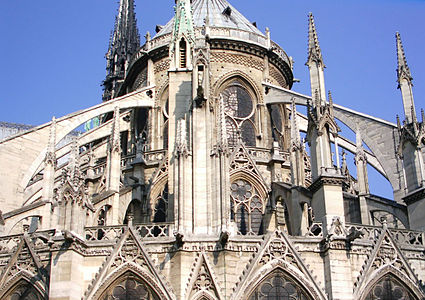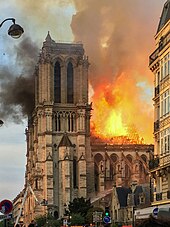I love to walk with Grandma... Her steps are small like mine... She never rushes me along... She lets me take my time... Grandma notices little things exactly like I do... She'll see a shiny pebble, a funny cloud, a flower bright with dew... I'm grateful for my grandma, who's nice as she can be... How wonderful that Grandma is as smart and young as me! --- Anonymous.

Hello. I'm writer Antoinette Beard/Sorelle Sucere. Welcome to my blog, which is dedicated to all the loving, intelligent, brave, wise, strong, gentle, kind, sweet-and-geeky, humble-and-patient, --- whether they have hands, paws, hooves, wings, fins, or even, --- yes, flippers, --- and to all eager readers and hard-working authors, everywhere.
Meanwhile...

I love all creatures. I consider them, all of them, to be sentient beings... I write thrillers, fantasy, mysteries, gothic horror, romantic adventure, occult, Noir, westerns and various types of short stories. I also re-tell traditional folk tales and make old fairy tales carefully cracked. I'm often awake very early in the morning. A cuppa, and fifteen minutes later I'm usually writing something. ;)
Friday, April 19, 2019
Thursday, April 18, 2019
Wednesday, April 17, 2019
City Tour Of Paris France At Night... [I SO want to go there!!!]...
Sigh... ;)
Tuesday, April 16, 2019
The Cathedral Notre Dame...
"Our Lady of Paris", often referred to simply as Notre-Dame, is a medieval Catholic cathedral on the Île de la Cité in the 4th arrondissement of Paris, France. The cathedral is considered to be one of the finest examples of French Gothic architecture. Its innovative use of the rib vault and flying buttress, its enormous and colourful rose windows, and the naturalism and abundance of its sculptural decoration set it apart from the earlier Romanesque style.
The cathedral was begun in 1160 under Bishop Maurice de Sully and was largely complete by 1260, though it was modified frequently in the ensuing centuries. In the 1790s, Notre-Dame suffered desecration during the French Revolution; much of its religious imagery was damaged or destroyed. In 1804, the cathedral was the site of the Coronation of Napoleon I as Emperor of France, and witnessed the baptism of Henri, Count of Chambord in 1821 and the funerals of several presidents of the Third French Republic.
Popular interest in the cathedral blossomed soon after the publication, in 1831, of Victor Hugo's novel The Hunchback of Notre-Dame. This led to a major restoration project between 1844 and 1864, supervised by Eugène Viollet-le-Duc, who added the cathedral's iconic spire. The liberation of Paris was celebrated within Notre-Dame in 1944 with the singing of the Magnificat. Beginning in 1963, the façade of the cathedral was cleaned of centuries of soot and grime, returning it to its original color. Another cleaning and restoration project was carried out between 1991 and 2000.
The cathedral is one of the most widely recognized symbols of the city of Paris and the French nation. As the cathedral of the Archdiocese of Paris, Notre-Dame contains the cathedra of the Archbishop of Paris(Michel Aupetit). 12 million people visit Notre-Dame annually, making it the most visited monument in Paris.
While undergoing renovation and restoration, the cathedral caught fire on 15 April 2019 and sustained significant damage, including the destruction of the spire and two-thirds of the roof.[1] French President Emmanuel Macron announced that Notre-Dame will be rebuilt, stating "It's part of the fate, the destiny of France, and our common project over the coming years. And I am committed to it."
History
It is believed that before the period of Christianity in France, a Gallo-Roman temple dedicated to Jupiterstood on the site of Notre-Dame. Evidence for this is the Pillar of the Boatmen, discovered in 1710. This building was replaced with an Early Christian basilica. It is unknown whether this church, dedicated to Saint Stephen, was constructed in the late 4th century and remodeled later, or if it was built in the 7th century from an older church, possibly the cathedral of Childebert I.The basilica, later cathedral, of Saint-Étienne [fr] was situated about 40 metres (130 ft) west of Notre-Dame's location and was wider and lower and roughly half its size. For its time, it was very large—70 metres (230 ft) long—and separated into naveand four aisles by marble columns, then decorated with mosaics.
A baptistery, the Church of John the Baptist [fr], built before 452, was located on the north side of the church of Saint-Étienne until the work of Jacques-Germain Soufflot in the 18th century.Four churches succeeded the Roman temple before Notre-Dame. The first was the 4th century basilica of Saint-Étienne, then the Merovingian renovation of that church which was in turn remodeled in 857 under the Carolingiansinto a cathedral. The last church before the cathedral of Notre-Dame was a Romanesque remodeling of the prior structures that, although enlarged and remodeled, was found to be unfit for the growing population of Paris.
In 1160, the Bishop of Paris, Maurice de Sully, decided to build a new and much larger church. He summarily demolished the Romanesque cathedral and chose to recycle its materials. Sully decided that the new church should be built in the new Gothic style, as by then a number of large Gothic cathedrals had already been raised elsewhere in France
Initial construction
The chronicler Jean de Saint-Victor [fr] recorded in the Memoriale Historiarum that the construction of Notre-Dame began between 24 March and 25 April 1163 with the laying of the cornerstone in the presence of King Louis VII and Pope Alexander III.Four phases of construction took place under bishops Maurice de Sully and Eudes de Sully (not related to Maurice), according to masters whose names have been lost or were not recorded.
The first phase began with the construction of the choir and its two ambulatories. According to Robert of Torigni, the choir was completed in 1177 and the high altar consecrated on 19 May 1182 by Cardinal Henri de Château-Marçay, the Papal legate in Paris, and Maurice de Sully.The second phase, from 1182 to 1190, concerned the construction of the four sections of the nave behind the choir and its aisles to the height of the clerestories. It began after the completion of the choir but ended before the final allotted section of the nave was finished. Beginning in 1190, the bases of the facade were put in place, and the first traverses were completed.
The decision was made to add a transept at the choir, where the altar was located, in order to bring more light into the center of the church. The use of simpler four-part rather than six-part rib vaults meant that the roofs were stronger and could be higher. After Bishop Maurice de Sully's death in 1196, his successor, Eudes de Sully (unrelated to the previous Bishop) oversaw the completion of the transepts, and continued work on the nave, which was nearing completion at the time of his own death in 1208. By this time, the western facade was already largely built, though it was not completed until around the mid-1240s. Between 1225 and 1250 the upper gallery of the nave was constructed, along with the two towers on the west facade.
Another significant change came in the mid-13th century, when the transepts were remodeled in the latest Rayonnant style; in the late 1240s Jean de Chellesadded a gabled portal to the north transept topped off by a spectacular rose window. Shortly afterwards (from 1258) Pierre de Montreuil executed a similar scheme on the southern transept. Both these transept portals were richly embellished with sculpture; the south portal features scenes from the lives of St Stephen and of various local saints, while the north portal featured the infancy of Christ and the story of Theophilus in the tympanum, with a highly influential statue of the Virgin and Child in the trumeau. Master builders Pierre de Chelles, Jean le Bouteiller, and Raymond du Temple succeeded de Chelles and de Montreuil and then each other in the construction of the cathedral.
An important innovation in the 13th century was the introduction of the flying buttress. Before the buttresses, all of the weight of the roof pressed outward and down to the walls, and the abutments supporting them. With the flying buttress, the weight was carried by the ribs of the vault entirely outside the structure to a series of counter-supports, which were topped with stone pinnacles which gave them greater weight. The buttresses meant that the walls could be higher and thinner, and could have much larger windows. The date of the first buttresses is not known with any precision; they were installed some time in the 13th century. The first buttresses were replaced by larger and stronger ones in the 14th century; these had a reach of fifteen meters between the walls and counter-supports.
John of Jandun recognized the cathedral as one of Paris's three most important buildings [prominent structures] in his 1323 Treatise on the Praises of Paris:
| “ | That most glorious church of the most glorious Virgin Mary, mother of God, deservedly shines out, like the sun among stars. And although some speakers, by their own free judgment, because [they are] able to see only a few things easily, may say that some other is more beautiful, I believe however, respectfully, that, if they attend more diligently to the whole and the parts, they will quickly retract this opinion. Where indeed, I ask, would they find two towers of such magnificence and perfection, so high, so large, so strong, clothed round about with such a multiple variety of ornaments? Where, I ask, would they find such a multipartite arrangement of so many lateral vaults, above and below? Where, I ask, would they find such light-filled amenities as the many surrounding chapels? Furthermore, let them tell me in what church I may see such a large cross, of which one arm separates the choir from the nave. Finally, I would willingly learn where [there are] two such circles, situated opposite each other in a straight line, which on account of their appearance are given the name of the fourth vowel [O] ; among which smaller orbs and circlets, with wondrous artifice, so that some arranged circularly, others angularly, surround windows ruddy with precious colors and beautiful with the most subtle figures of the pictures. In fact I believe that this church offers the carefully discerning such cause for admiration that its inspection can scarcely sate the soul. | ” |
| — Jean de Jandun, Tractatus de laudibus Parisius[ | ||
- Plan of the Cathedral made by Eugène Viollet-le-Duc in the 19th century. Portals and nave to the left, choir in the center, and apse and ambulatory to the right.
- Early six-part rib vaults of the nave. The ribs transferred the thrust of the weight of the roof downward and outwards to the pillars and the supporting buttresses.
- Cross-section of the double supporting arches and buttresses of the nave (13th century) drawn by Eugène Viollet-le-Duc
Modern history
In 1548, rioting Huguenots damaged some of the statues of Notre-Dame, considering them idolatrous. During the reigns of Louis XIV and Louis XV, the cathedral underwent numerous alterations to comply with the more classical style of the period. The sanctuary was re-arranged; the choir was largely rebuilt in marble, and many of the stained-glass windows from the 12th and 13th century were removed and replaced with white glass windows, to bring more light into the church. A colossal statue of St Christopher, standing against a pillar near the western entrance and dating from 1413, was destroyed in 1786. The spire, which had been damaged by the wind, was removed in the second part of the 18th century.
In 1793, during the French Revolution, the cathedral was rededicated to the Cult of Reason, and then to the Cult of the Supreme Being. During this time, many of the treasures of the cathedral were either destroyed or plundered. The twenty-eight statues of biblical kings located at the west façade, mistaken for statues of French kings, were beheaded.Many of the heads were found during a 1977 excavation nearby, and are on display at the Musée de Cluny. For a time the Goddess of Liberty replaced the Virgin Mary on several altars. The cathedral's great bells escaped being melted down. All of the other large statues on the facade, with the exception of the statue of the Virgin Mary on the portal of the cloister, were destroyed. The cathedral came to be used as a warehouse for the storage of food and other non-religious purposes.
In July 1801, the new ruler, Napoleon Bonaparte, signed an agreement to restore the cathedral to the Church. It was formally transferred on 18 April 1802. It was the setting of Napoleon's coronation as Emperor on 2 December 1804, and of his marriage to Marie-Louise of Austria in 1810.
19th century reconstruction
The cathedral was functioning in the early 19th century, but was half-ruined inside and battered throughout. In 1831, the novel Notre-Dame de Paris by Victor Hugo, published in English as The Hunchback of Notre-Dame had an enormous success, and brought the cathedral new attention. In 1844 King Louis Philippeordered that the church be restored. The commission for the restoration was won by two architects, Jean-Baptiste-Antoine Lassus and Eugène Viollet-le-Duc, who was then just 31 years old. They supervised a large team of sculptors, glass makers and other craftsmen who remade, working from drawings or engravings, the original decoration, or, if they did not have a model, adding new elements they felt were in the spirit of the original style. They made a taller and more ornate reconstruction of the original spire (including a statue of Saint Thomas that resembles Viollet-le-Duc), as well as adding the sculpture of mythical creatures on the Galerie des Chimères. The restoration took twenty five years.
During the liberation of Paris in August 1944, the cathedral suffered some minor damage from stray bullets. Some of the medieval glass was damaged, and was replaced by glass with modern abstract designs. On 26 August, a special mass was held in the cathedral to celebrate the liberation of Paris from the Germans; it was attended by General Charles De Gaulle and General Philippe Leclerc.
In 1963, on the initiative of culture minister André Malraux and to mark the 800th anniversary of the Cathedral, the facade was cleaned of the centuries of soot and grime, restoring it to its original off-white color.
Artwork, relics, and other antiques stored at the cathedral include the supposed crown of thorns which Jesus wore prior to his crucifixion and a piece of the cross on which he was crucified, a 13th-century organ, stained-glass windows, and bronze statues of the 12 apostles.
Modern renovations
The stone masonry of the cathedral's exterior had deteriorated in the 19th and 20th century due to increased air pollution in Paris, which accelerated erosion of decorations and discolored the stone. By the late 1980s, several gargoyles and turrets had also fallen off or become too loose to remain in place.[28] A decade-long renovation program began in 1991 and replaced much of the exterior, with care given to retain the authentic architectural elements of the cathedral, including rigorous inspection of new limestone blocks. A discreet system of electrical wires, not visible from below, was also installed on the roof to deter pigeonsThe cathedral's pipe organ was upgraded The west face was cleaned and restored in time for millennium celebrations in December 1999.
The set of four 19th-century bells atop the northern towers at Notre-Dame were melted down and recast into new bronze bells in 2013, to celebrate the building's 850th anniversary. They were designed to recreate the sound of the cathedral's original bells from the 17th century.Despite the 1990s renovation, the cathedral had continued to show signs of deterioration that prompted the national government to propose a new renovation program in the late 2010s.The entire renovation was estimated to cost 100 million euros, which the Archbishop of Paris planned to raise through funds from the national government and private donations. A €6 million renovation of the cathedral's spire began in late 2018 and continued into the following year, requiring the temporary removal of copper statues on the roof and other decorative elements days before the April 2019 fire.
2019 fire
On 15 April 2019 at 18:50 local time the cathedral caught fire, causing the collapse of the spire and the oak roof. Both towers were safe. The extent of the damage was initially unknown, as was the cause of the fire, though it speculated that it was linked to ongoing renovation work.
French President Emmanuel Macron said approximately 400 firefighters helped to battle the fire. One firefighter was seriously injured during the blaze.
Many artifacts were saved before the fire spread to other parts of the cathedral. Because of the ongoing renovation, the copper statues that were normally on the now collapsed spire had been removed from the building The stone vaulting which forms the ceiling of the cathedral remained largely intact, preventing the burning timbers falling into the building below.
The billionaire François-Henri Pinault announced plans to pledge €100 million towards renovation and called for a joint effort to fund repairs. Soon after, LVMH owner and billionaire Bernard Arnault and his family pledged another €200 million for the restoration of "this extraordinary cathedral, which is a symbol of France
Monday, April 15, 2019
The Immense Peculiar Winchester House...
After her husband's death from tuberculosis in 1881, Sarah Winchester inherited more than $20.5 million (equivalent to $532 million in 2018). She also received nearly fifty percent ownership of the Winchester Repeating Arms Company, giving her an income of roughly $1,000 per day, equivalent to $26,000 a day in 2018. These inheritances gave her a tremendous amount of wealth which she used to fund the ongoing construction.
Tabloids from the time said that, at some point after her infant daughter died of an illness known as marasmus, a children's disease in which the body wastes away, and her husband died of pulmonary tuberculosis, a Boston medium told her (while supposedly channeling her late husband) that she should leave her home in New Havenand travel West, where she must continuously build a home for herself and the spirits of people who had fallen victim to Winchester rifles. Winchester left New Haven and headed for California. Though it is possible she was simply seeking a change of location and a hobby during her lengthy depression, other sources say that Winchester came to believe her family and fortune were haunted by ghosts and that only by moving West and continuously building them a house could she appease these spirits.
In 1884 she purchased an unfinished farmhouse in the Santa Clara Valley and began building her mansion. Carpenters were hired and worked on the house day and night until it became a seven-story mansion. She did not use an architect and added on to the building in a haphazard fashion, so the home contains numerous oddities such as doors and stairs that go nowhere, windows overlooking other rooms and stairs with odd-sized risers. Many accounts attribute these oddities to her belief in ghosts. Environmental psychologists have theorized that the odd layout itself contributes to the feeling of the house being haunted today.
Before the 1906 earthquake, the house had been seven stories high and carpenters may have been brought in initially to repair damages caused by the quake. Today it is only four stories. The house is predominantly made of redwood, as Mrs. Winchester preferred the wood; however, she disliked the look of it. She, therefore, demanded that a faux grain and stain be applied. This is why almost all the wood in the home is covered. Approximately 20,500 U.S. gallons (78,000 L) of paint were required to paint the house.
The home itself is built using a floating foundation that is believed to have saved it from total collapse in the 1906 earthquake and the 1989 Loma Prieta earthquake. This type of construction allows the home to shift freely, as it is not completely attached to its brick base. There are roughly 161 rooms, including 40 bedrooms, 2 ballrooms (one completed and one unfinished) as well as 47 fireplaces, over 10,000 panes of glass, 17 chimneys (with evidence of two others), two basements and three elevators. Winchester's property was about 162 acres (66 ha) at one time, but the estate has since been reduced to 4.5 acres (1.8 ha) – the minimum necessary to contain the house and nearby outbuildings. It has gold and silver chandeliers, hand-inlaid parquet floors and trim, and a vast array of colors and materials. Due to Mrs. Winchester's debilitating arthritis, special "easy riser" stairways were installed as a replacement for her original steep construction. This allowed her to move about her home freely as she was only able to raise each foot a few inches. There was only one working toilet for Winchester, but all other restrooms were decoys to confuse spirits. This is also the reason why she slept in a different room each night.
The home's conveniences were rare at the time of its construction. These included steam and forced-air heating, modern indoor toilets and plumbing, push-button gas lights, and Mrs. Winchester's personal (and only) hot shower from indoor plumbing. There are also three elevators, including an Otis electric and one of which was powered by a rare horizontal hydraulic elevator piston. (Most elevator pistons are vertical to save space, but Winchester preferred the improved functionality of the horizontal configuration.)

The manual and emergency tools for the OtisAutomatic Electric elevator
Mrs. Winchester never skimped on the many adornments that she believed contributed to its architectural beauty. Many of the stained glass windows were created by the Tiffany Company. Some were designed specifically for her, and others by her, including a "spider web" window that featured her favorite web design and the repetition of the number thirteen, another of her preoccupations. This window was never installed but exists in the so-called "$25,000 storage room" - so named because its contents were originally appraised at a value of $25,000. The value today is inestimable, but $25,000 would be equivalent to $374,000 in 2018. A second window was designed by Tiffany himself, so that when sunlight strikes the prismatic crystals a rainbow is cast across the room. The window was installed in an interior wall in a room with no light exposure, preventing the effect from being seen.
When Winchester died, all of her possessions (apart from the house) were bequeathed to her niece and personal secretary. Her niece then took everything she wanted and sold the rest in a private auction. It supposedly took six trucks working eight hours a day for six weeks to remove all of the furniture from the home, an account disputed by Winchester's biographer. Mrs. Winchester made no mention of the mansion in her will, and appraisers considered the house worthless due to damage caused by the earthquake, the unfinished design and the impractical nature of its construction. It was sold at auction to a local investor for over $135,000, and subsequently leased for 10 years to John and Mayme Brown, who eventually purchased the house. In February 1923, five months after Winchester's death, the house was opened to the public, with Mayme Brown serving as the first tour guide.
Today the home is owned by Winchester Investments LLC, a privately held company representing the descendants of John and Mayme Brown. The home retains unique touches that reflect Mrs. Winchester's beliefs and her reported preoccupation with warding off malevolent spirits. These spirits are said to have directly inspired her as to the way the house should be built. The number thirteen and spider web motifs, which carried spiritual significance for her, occur throughout the house.
In the early 1990s the Winchester property had parapsychologist, anomalist and paranormal investigator Christopher Chacon conduct an investigation (30-day monitoring) of the reported "haunt phenomena" on the property.
In 2016, it was announced that another room was found: an attic space that contains a pump organ, Victorian couch, dress form, sewing machine and paintings. This room was made available for viewing by the public.
In 2017, the Winchester Mystery House debuted their first new daytime tour in 20 years, the "Explore More Tour". This tour takes guests through rooms never before opened to the public, and explores the rooms left unfinished at the time of Sarah Winchester's death.
Friday, April 12, 2019
Monday, April 8, 2019
What Is The Cimaruta???...

The cimaruta ("chee-mah-roo-tah"; plural cimarute) is an Italian folk charm, a type traditionally worn around the neck or hung above an infant's bed to ward off the evil eye (Italian: mal'occhio). Commonly made of silver, the amulet itself consists of several small apotropaic charms (some of which draw upon Christian symbolism), with each individual piece attached to what is supposed to represent a branch of rue—the flowering medicinal herb for which the whole talisman is named, "cimaruta" being a Neapolitan form of cima di ruta: Italian for "sprig of rue".
The component parts of the cimarute, which are particularly associated with southern Italy, may differ by region of origin. From out of a central stalk of rue serving as its base, there radiate multiple branches which appear to blossom into various designs; the divergent branches "sprout" at their extremities such magical symbols as: a rose; a hand holding either a wand or a sword; a flaming heart; a fish; a crescent moon; a snake; an owl; a plumed medieval helmet; a vervain blossom; a dolphin; a cock; and an eagle. One cimaruta, for example, might bear the collective imagery of a key, dagger, blossom and moon. Most are double-sided and fairly large—some almost four inches in width.
Along with various other documented elements of regional magic traditions, the cimaruta is (alleged to be) in borrowed use amongst self-identified Italian-American witches. Some practitioners of the Neopagan "religion of witchcraft" Stregheria (or "Streghe") may consider it a remnant of a more ancient Italian magic tradition, such as that detailed by Charles Leland in his 1899 text Aradia, or the Gospel of the Witches (which—apart from directly influencing the development of Stregheria—claimed the existence of an insular pagan witch-cult active in Italy).
Along with various other documented elements of regional magic traditions, the cimaruta is (alleged to be) in borrowed use amongst self-identified Italian-American witches. Some practitioners of the Neopagan "religion of witchcraft" Stregheria (or "Streghe") may consider it a remnant of a more ancient Italian magic tradition, such as that detailed by Charles Leland in his 1899 text Aradia, or the Gospel of the Witches (which—apart from directly influencing the development of Stregheria—claimed the existence of an insular pagan witch-cult active in Italy).
Author Raven Grimassi in his book The Cimaruta: And Other Magical Charms From Old Italy (2012) discusses the charm as a sign of membership in the "Society of Diana" which he refers to as an organization of witches. Grimassi argues that the Cimaruta was originally a witchcraft charm used by witches that was later arrogated by Italian Folk Magic, and that Christian symbols were then added to the original Pagan symbols.
What Is The Stregheria???...
History
The modern movement originates in the 1970s with Italian-American Leo Martello. Martello claimed to belong to a "family tradition" of religious witchcraft in his 1970s book Witchcraft: The Old Religion. Martello does not use the word "Stregheria" when referring to his personal practice, but refers to it as "the Strega tradition".
Raven Grimassi began teaching the "Aridian Tradition", a modernized public system presented in his published works, in 1980 in the San Diego, California area. Grimassi published two books related to the topic (Italian Witchcraft and Hereditary Witchcraft) between 1981 and 2009.
Revival of the name Stregheria first occurs in Grimassi's Ways of the Strega (1994). In using an archaic Italian term, Grimassi follows Gerald Gardner (1954), who used the Old English form wicca to refer to the adherents of his alleged "witch cult". The word is earlier found in a book titled Apologia della Congresso Notturno Delle Lamie by Girolamo Tartarotti (1751), who uses stregheria to describe Italian witchcraft as the cult of the goddess Diana. Although the validity of this view has been disputed by American scholars, Italian ethnohistorian Paolo Portone has demonstrated reference to the cult of Diana in the records of the earliest witch trials, including in the Canon Episcopi. Moreover, by contrasting the trials held before the Inquisitor of Milan in 1384 and 1390 of Sybil de Laria and Pierina de Bugatis, Portone has demonstrated how Inquisitors constructed beliefs surrounding "evil witches" directly from the Pagan worship of Diana. Grimassi founded the "Arician Tradition" in 1998, described as an initiate level variant of Stregheria.
Raven Grimassi
Raven Grimassi is the pen name of an Italian-American author, born in 1951 as the son of an Italian immigrant who was born and raised in the area of Naples, Italy. He became involved with a coven presenting itself as Gardnerian Wicca in 1969 in San Diego. He is the founder of the Aridian and Arician traditions of Italian-based witchcraft. He stepped down as the directing elder of Arician Witchcraft in 2004. Grimassi currently (as of 2009) lives in Massachusetts and is the directing elder of the Ash, Birch and Willow tradition, and co-director of the Fellowship of the Pentacle. He was formerly co-director of the College of the Crossroads.
Grimassi is reportedly descended from an Italian witch named Calenda Tavani, who lived in Naples several generations ago. Grimassi states that his early training was a mixture of Italian witchcraft and folk magic.
His later interest in Neo-paganism began in 1969, and he was initiated into a system claiming to be Gardnerian Wicca in San Diego though the tradition's claim eventually proved to be false. Ten years later, Grimassi began teaching the "Aridian Tradition" , which he describes as a "modern system" of Italian Witchcraft or Stregheria, that he created for non-initiates. Grimassi also studied Kabbalah and other traditions of Wicca such as Brittic and the Pictish-Gaelic system in which he received third degree initiation in 1983 according to the Encyclopedia of Wicca & Witchcraft. Grimassi also received third degree initiation into Traditionalist Celtic Wicca in 2001 at the First Wiccan Church of Escondido, California.
Views on a historical religion of witchcraft
Grimassi shares in common, in his books, the general "Witch-cult hypothesis" that appears in the writings of Charles G. Leland (Aradia, or the Gospel of the Witches, 1899), a theory to the effect that European witchcraft was the continuation of an ancient pre-Christian form.
Grimassi describes the roots of Stregheria as a syncretic offshoot of Etruscan religion that later blended with "Tuscan peasant religion", medieval Christian heresy, and veneration of saints.
Grimassi views Leland's book Aradia, or the Gospel of the Witches as a "Christianized and distorted version" of the original story of Aradia, whom he believes to be a mortal woman named Aradia di Toscano. However, Grimassi does endorse a number of elements from Leland's Aradia material, such as the inclusion of a full moon ritual and a sacred meal at the Tregenda, or Sabbat, along with the pantheon of a goddess and god figure.
Grimassi writes that Aradia di Toscano passed on a religion of witchcraft, based on ancient Etruscan paganism, to her followers (whom Grimassi calls "The Triad Clans"). The Triad Clans are referred to as "an alliance of three related Witch Clans known as the Tanarra, Janarra, and Fanarra".
Folklorist Sabina Magliocco points out that "Grimassi never claims to be reproducing exactly what was practiced by Italian immigrants to North America; he admits Italian-American immigrants "have adapted a few Wiccan elements into their ways".
Claims of family tradition
Reports that Grimassi claims to belong to a "family tradition" of religious witchcraft has attracted criticism. Grimassi responds by saying that, although he wrote about such a family tradition, he intentionally never specifically mentions his own family in his books, but that Llewellyn's marketing department designed text depicting him as being raised in a family tradition .Grimassi does not deny being the bearer of a family lineage but chooses to protect the privacy of his family by not mentioning or referencing specific members (hence his use of a pseudonym).
Sabina Magliocco, who has criticized some of Grimassi's claims, does point out that "Grimassi never claims to be reproducing exactly what was practiced by Italian immigrants to North America; he admits Italian-American immigrants "have adapted a few Wiccan elements into their ways". After personally meeting Grimassi, Magliocco writes in her letter to the Pomegranate Reader's Forum:
I had the pleasure of meeting Raven Grimassi during the summer of 2001, unfortunately after the final draft of my article had already been submitted to The Pom. He was very gracious and helpful to me. From information he revealed during our interview, I can say with reasonable certainty that I believe him to have been initiated into a domestic tradition of folk magic and healing such as I describe in my article.
Practices

Drawing of a pentagram ring from Crotone, Italy, taken from IMAGINI DEGLI DEI ANTICHI (Vincenzo Cartari, 1647)
Grimassi's tradition centers around a duotheistic pair of deities that are regarded as divine lovers, and they may go by many different names, including: Uni and Tagni, Tana and Tanus, Diana and Dianus, Jana and Janus, and more. Practices include the celebration of seasonal holidays, ritual magic, strict adherence to performing their rituals skyclad for at least half of the year, and reverence for gods, ancestors and tradition-specific spirits. Stregheria itself has variant traditions, and individual practices may vary considerably.
In comparing Stregheria to Wicca, Grimassi notes both similarities between the two and differences. He has defended his material as being significantly different from Wicca at the roots level, and asserts that many of the foundational concepts in Gerald Gardner's Wicca can be found earlier in works on Italian Witchcraft and ancient Mediterranean mystery sects.
Grimassi called his specific teachings on Stregheria the "Aridian Tradition" from 1980, after Aradia of Tuscany, an alleged messianic figure known as the "goddess of the witches", viewed within the "Arician Tradition" as a witch who revived the Old Religion. While the "Aridian" tradition was based on "self-dedication" alone, the "Arician" tradition involves a rite of initiation.
Some systems within Stregheria use a pentagram as an important symbol. The pentagram is often worn in the form of ring or necklace piece. Some traditions of Stregheria use the ritual tools of cup, wand, pentacle and blade, which are seen in the suits of occult or divinatory tarotcards and amongst many systems of Western occultism. Some Stregheria rituals take place in a circle, with an altar facing North. Ritual actions include prayer, and the blessing of food.
Some adherents of Stregheria celebrate the eight holidays of the neopagan Wheel of the Year, called "Treguendas", while others celebrate the Roman Catholic or the ancient Roman holidays. One unified practice among Streghe is "ancestor reverence through spirits known as Lares".
Subscribe to:
Posts (Atom)











